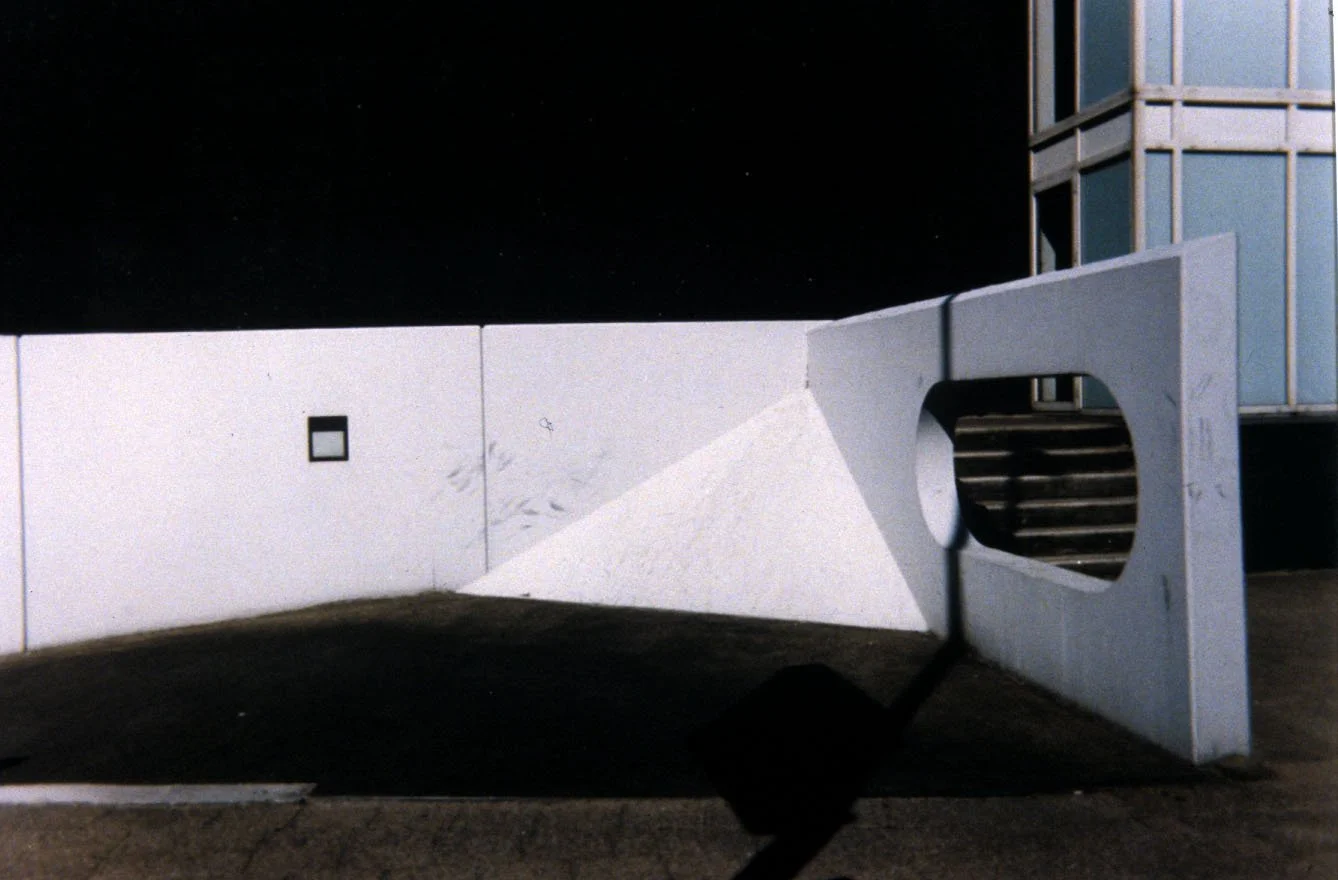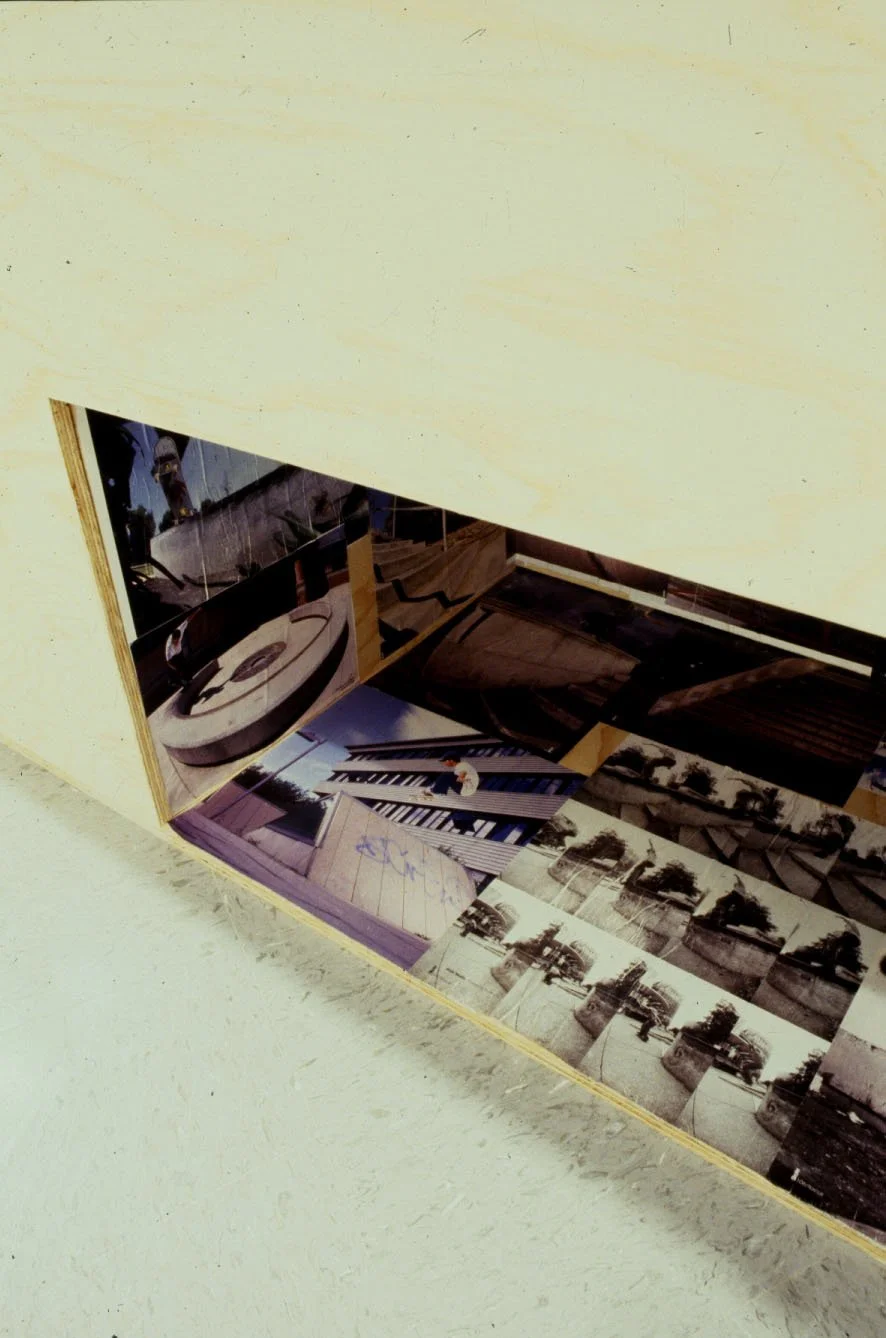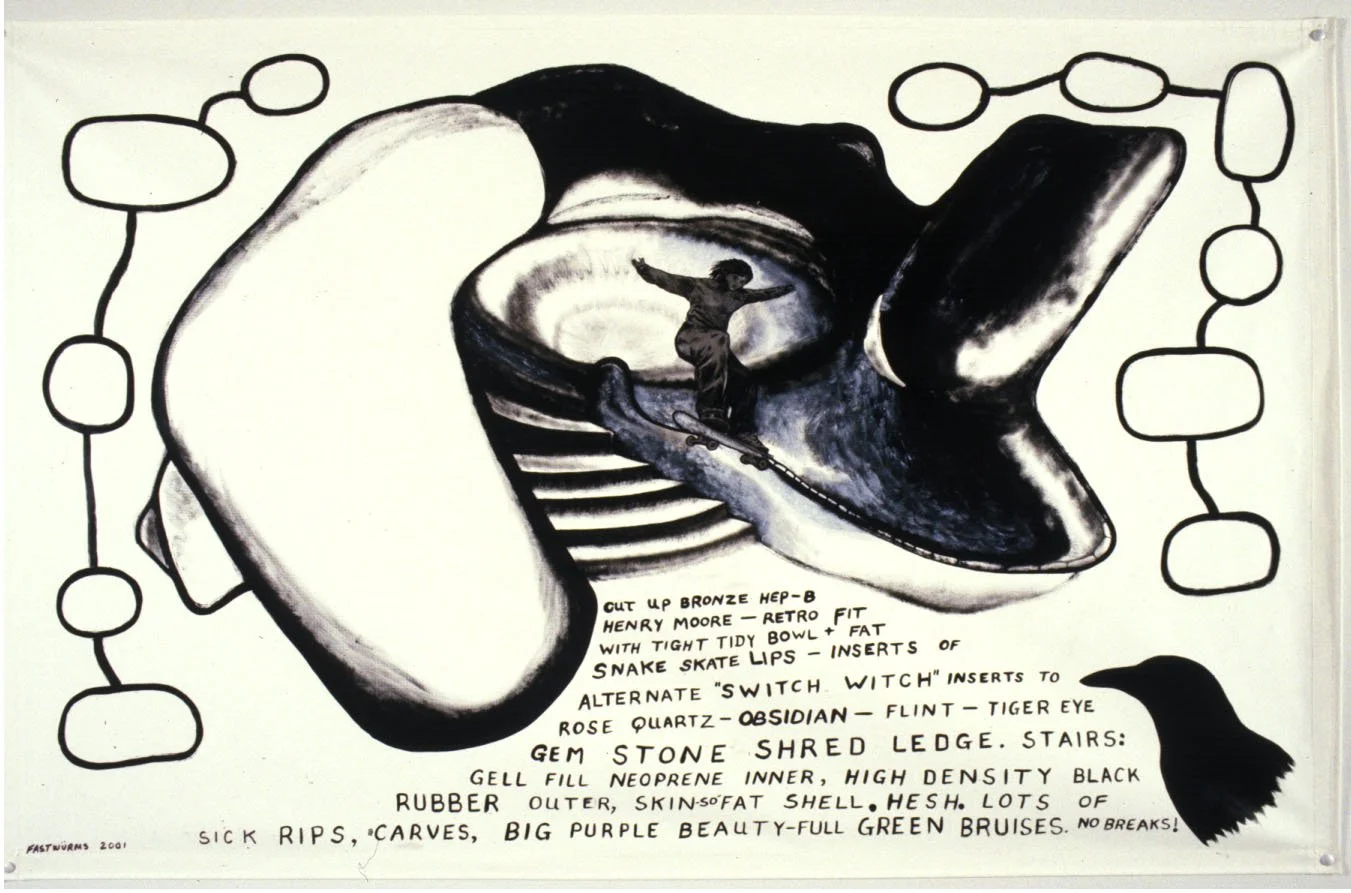
Godzilla vs Skateboarders: Skateboarding as a Critique of Social Spaces
In skateboarding circles, there is a saying that has been quoted in different ways and often enough that it approaches myth: “Two hundred years of American technology has unwittingly created a massive cement playground of immense potential. But it was the minds of 11 year olds that could see the potential.”[i] Perhaps this is the skateboarding world’s equivalent to punk rock’s slogan, “here’s three chords, now go start a band.” Given the context of a massive playground, it is the role of play as a cultural practice that I want to consider here, in this interpretation of social spaces and visual culture. Skateboarding is a vehicle that follows this path. That all the concrete, steel, and detritus of the North American continent is a vast playground is the vision of this exhibition.
Architecture—the “built” environment (in the most expansive sense)—is a space of creation and interpretation. The possibilities of how we may choose to build, move through, and interpret space are imagined by not only architects, but also by artists, philosophers, filmmakers, writers, and performers.
The exhibition title Godzilla vs Skateboarders implies a site—like those depicted in the Godzilla films—where forces collide, usually in a specific location that carries meaning (i.e. an identifiable landmark). However, in this exhibition, the “vs” is intended to connote a comparison rather than opposing forces. Godzilla is generally perceived as a figure that does little more than stomp around, roar, and smash things. It (they?) is then dispatched at or near some famous urban landmark. So too are skateboarders perceived to be doing little more than hanging around, “disturbing the peace,” and damaging things—until dispatched at or near some famous urban landmark. Such statuary, architecture, or plazas are notorious skater hangouts.
If we imagine that there is more going on than the above commonplace narratives imply—not only in Godzilla movies but in skateboarding and other performative acts in visual culture—the visual language of these acts reveal otherwise quiescent narratives that can bring new connotations to our social spaces.
Curated by Anthony Kiendl
Exhibiting artists: Mowry Baden, Aaron Carpenter, Fastwürms, Shaun Gladwell, Sandee Moore, Alex Morrison, and Joan Carlos Pérez Trejo.
Above image: Alex Morrison, untitled research photo.
[i] Hunn, David. Skateboarding. London: Duckworth, 1977, 6.
Publication cover.
Program poster, Edmonton Art Gallery.
Alex Morrison, research photograph.
Alex Morrison.
Alex Morrison.
Alex Morrison
Mowry Baden
Sandee Moore
Faztwürms









